The poetry of slow art: A Madrid exhibit by Sandra Zobel
In an art world that can sometimes be blinded by rapid trends, the power of slow art—and the deliberate journey to it—can make it more purposeful and meaningful. And its unexpected discovery can make it only more absorbing.
On an ancient street in Madrid, called Calle de la Bola, I found just such an exhibit recently. Titled “Camino,” it had already traveled a circuitous route from the north of Spain to the oldest part of its capital city. Not so surprisingly, it featured the works of Sandra Zobel, artist and photographer, who divides her time between Spain and the Philippines.
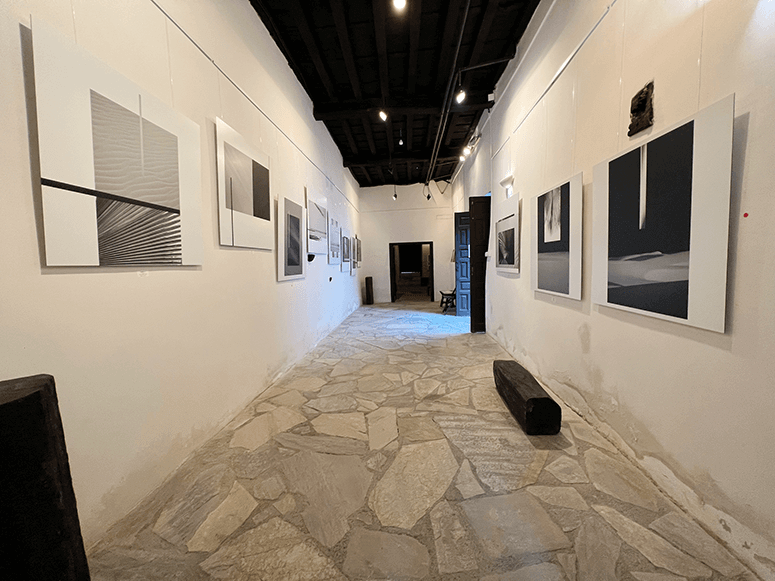
The show was originally designed for the Palacio de Torquemada Gallery in Villafranca del Bierzo in León, Spain, on the very route of the famous Camino de Santiago, the pilgrimage familiar to the devout from all over the world. It ushered in that gallery’s first exhibition since COVID-19 had closed it three years ago.
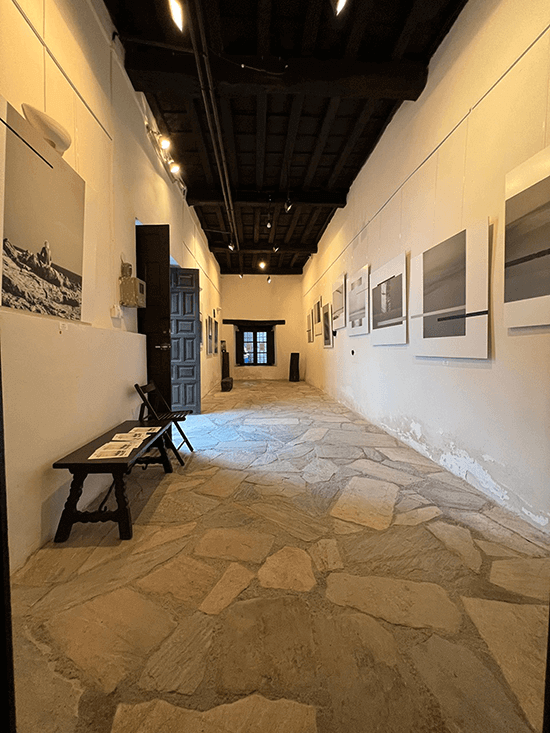
Sandra muses, “The gallery’s invitation made me think about all the different reasons people have to do the Camino and all the experiences and emotions they get from their journeys. This inspired me to think about the subjectivity of life’s paths. That, in turn, produced 12 pieces that started off with a realistic representation of the viewer and from there, the many possible directions we all can take until we reach the end of our lives. In the show, the last piece was the most abstract piece of all for everyone to look back on their own subjective life journey. As for the pieces in between, they each tell a story but I wanted the viewer to ponder on each image’s significance on their own.”
Imagine this collection in a brand-new modern gallery. I think this would have changed the significance of the life paths I was trying to share.
That first gallery had a specific character of its own like a second party to the art’s creation. “It was small and cozy, with very rustic natural materials,” she said. There was a rough stone floor and bits of wood coming out of the walls.” It was a sharp visual contrast to the clean, minimalistic style of her pieces.
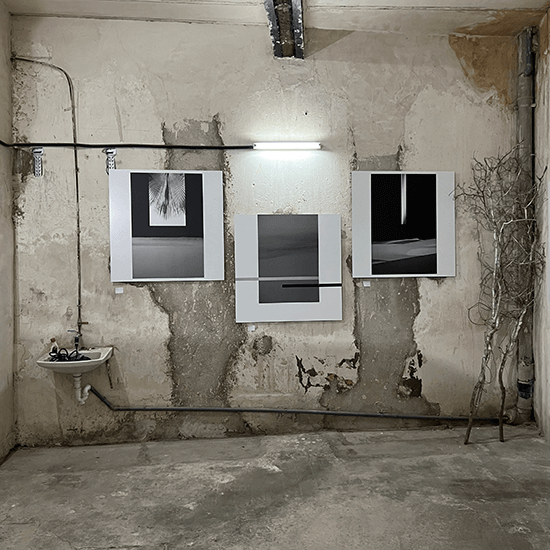
The photographs themselves were selected from what Sandra calls her “own personal caminos, if you will!”—personal travels to places including Spain, the Philippines and as varied and far afield as Cuba, Brazil and more.
That is not to say that the challenge was any less difficult, Sandra says. “The process took months until I could put together a collection I was happy with. I had a specific message for each piece clear in my head but I still had to go through thousands of photographs, looking for the right elements to represent the story.”
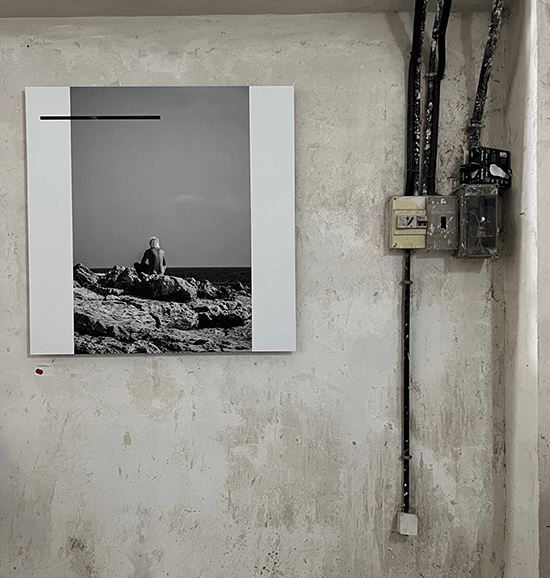
She came to the realization that the only route would be through an abstract lens: “I decided to turn to abstraction because I wanted viewers to really make it their own and see themselves in my art. This is also why I didn’t name my pieces. I didn’t want that to distract from their first impressions of the work and allow them to connect with them with their own paths and intentions for each specific piece.
“The collection is thus not a literal interpretation of the Camino de Santiago; but it is inspired by the subjectivity of each person’s reason to take on any journey and each person’s conclusions when they finish it. My collection is based on each person’s life’s paths!”
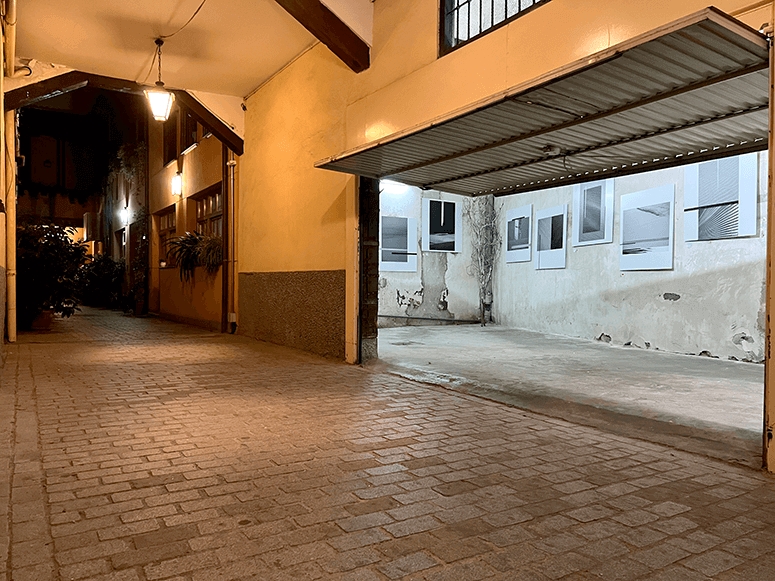
When the time came to take the exhibition down, there was an appeal to bring it to Madrid. “I was asked by people who had seen the exhibit on my social media channels to please show the collection in Madrid as going up to the north had been a bit complicated during the summer. I was excited for this as I knew I would be able to share my stories and interpretations with more people. I wanted to create that same essence and contrast I had found in Palacio de Torquemada but after a thorough search of possible spaces, nothing seemed to really fit with my vision.”
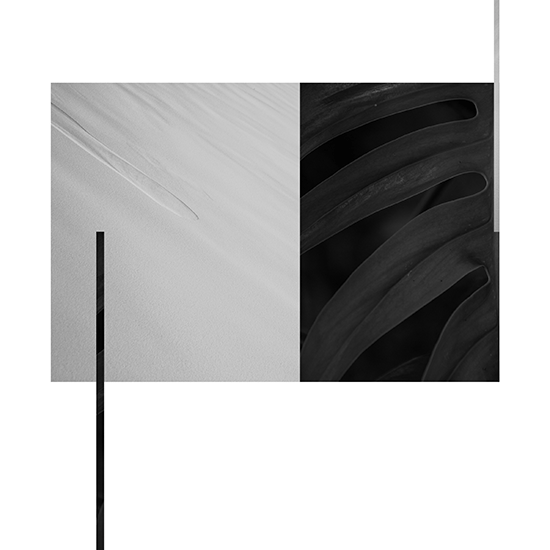
By chance, a spot with just the right atmosphere was finally found. “It was in a garage space in Calle de la Bola, a beautiful historic street which is lovely to walk around,” she confides. There’s a sense of mystery and anticipation as you arrive to view the exhibit. After going through a huge wooden gate that opens from the cobbled street (it was used for horse-drawn carriages which is why the space is street level), Sandra would personally raise a second metal door to what is now used sometimes as a garage space and the exhibit would be revealed in an instant. It is as startling and unexpected as the works—and this installation-like journey makes it that much more insightful.
“The garage was totally rundown and very damp,” she recalls. “Once I emptied it out and cleaned it up, I was offered the chance to paint the walls white but that was exactly what I wanted to avoid. The different textures of the weather-beaten walls with paint scrapes gave me the exact look I was going for!”
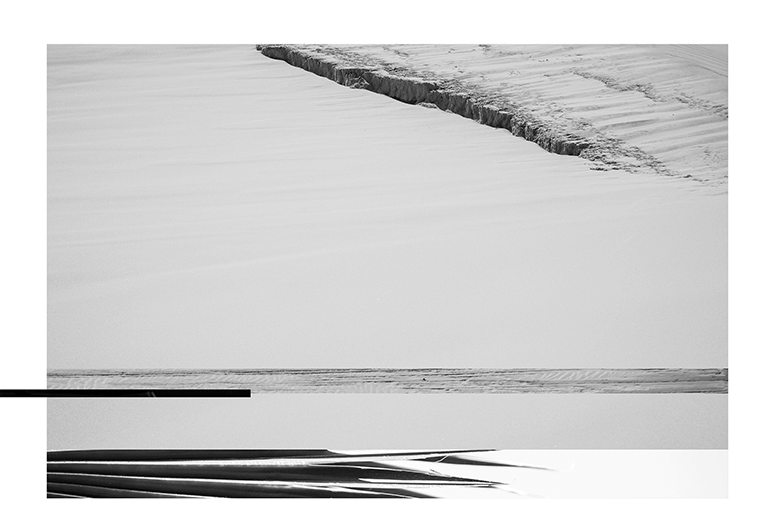
Indeed, there was a method to each site’s selection. Sandra explains: “Both spaces—in the Palacio de Torquemada and Calle de la Bola— were worn-down which was very important to me. Imagine this collection in a brand-new modern gallery. I think this would have changed the significance of the life paths I was trying to share. Experience brings with it all the bumps and hiccups along the way and this doesn’t mean the value of the path is damaged or affected in any negative way.”

Thus the photographs come in a very particular order but also allow them to flow with the viewer. “Because we must give ourselves the chance to grow and change,” Sandra says, “I wanted the artwork to be able to do the same, which is why every piece can also hang upside down and still work.”
She continues, “The ideas behind each piece are represented through nature in a very simple and minimalistic manner but in no way does this mean life comes easy. The message therefore is clear but the context is a bit more messy and realistic—just like life itself.”
* * *
Follow Sandra Zobel @sanzo_chameleon and on www.sanzophotography.com


